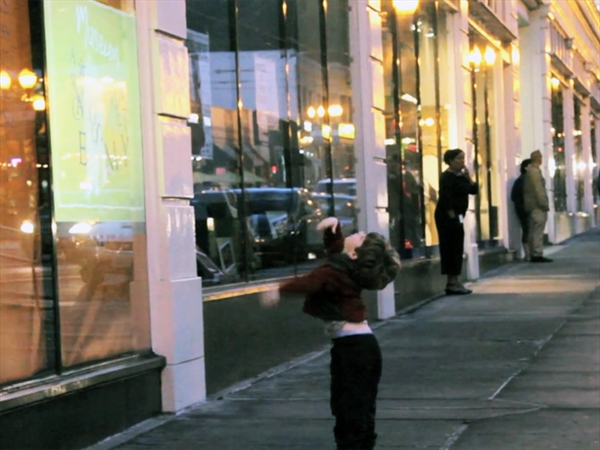
Pictured: A child re-arranges a Portland Children's Museum billboard In Summer 2011, Fashionbuddha teamed up with WK12 to bring the Portland Children's Museum's new brand to life. Earlier in the year, WK12 had given the museum a makeover. As a supplement to a prolific outdoor advertising campaign, Fashionbuddha was asked to create an interactive storefront out of a few of their billboards. The exhibit was installed at the busy corner of SW 10th and Alder in Portland, Oregon. A windowed wall was filled in with custom pieces of vinyl bearing the museum's new branding and a few strategically placed holes to place a rear projection screen and Kinect sensor. The application running on the projection appears to simply iterate through the layouts seen on billboards and bus stops all across town. But when passersby get into range of the sensor, their outline becomes part of the billboard where they can rearrange the graphics. The Portland Children's Museum is itself a place where children can discover and play without predefined rules. This project takes that message down the hill to the street. Back in May of 2011, I posted a little experiment using the Kinect, OpenCV, Box2D, and Delaunay triangulation. That post was actually a prototype for this project. Using triangulation on an outline acquired from OpenCV to feed into Box2D is a years old technique traditionally done with a standard webcam or video camera. The Kinect, however, along with the KinectSdk block's binary mode, is what made it possible to do this outside without consideration for what was going on in the background. Jeremy Brown of makemachine was recruited to address the text side of the project. He came up with a nice technique for finding clean boundaries on the text and logo before plugging them into Box2D, making for seamless interaction between a person's outline and the billboard layout. This also made it possible for us to easily add and change new layouts through XML. Like the Ballet Font project we did with the previous year's WK12, the storefront had its share of resorting to some creative resourcefulness, but went smoothly for the most part. Optimally, a North facing window would have guaranteed that the app could run around the clock, as the Kinect fails in direct sunlight. We ended facing West, so we had to write it to just run as a basic billboard scroller for the four hours of direct sunlight it received each afternoon. Despite that, it received its fair share of foot traffic as people walked to the nearby park, movie theater, or other attractions in the area that pick up after sundown.

